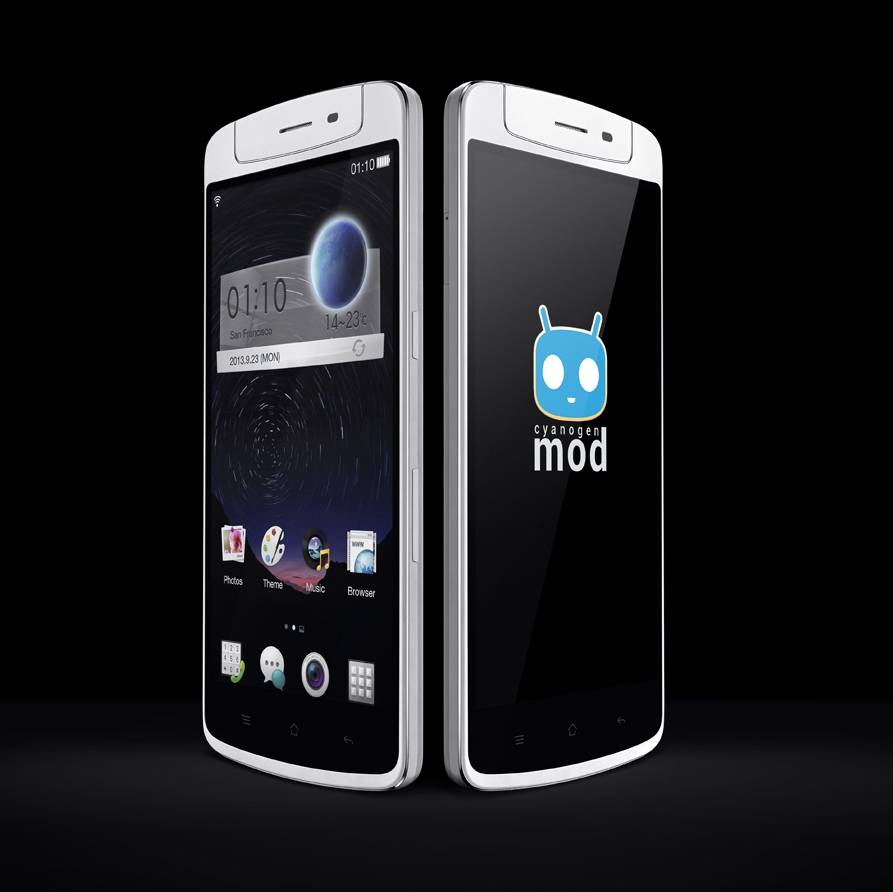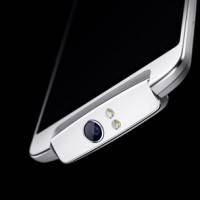
As we had been expecting, the OPPO N1 has been officially announced. There is some time before the handset will be available for purchase, however OPPO has offered a full set of specs — including details on how the handset will be the first to ship with CyanogenMod preinstalled. First things first though, the specs and the breakdown of the different models and availability.
The folks at OPPO are touting the N1 as bringing “innovation in choice.” This is the part that deals with CyanogenMod and Color. And for those not as familiar, Color is the name of the OS the OPPO N1 will ship with. Color is described as being a “unique Android operating system with over 400 unique features and improvements over stock Android.” Perhaps key for some, Color is based on Android 4.2.
In terms of Color and CyanogenMod, the international version of the N1 will ship with Color as well as the ability to flash CyanogenMod from the stock recovery. There will also be a limited OPPO N1 CyanogenMod Edition that will ship with CM preinstalled. Moving past the operating system and we also learn the OPPO N1 will be available in a 16GB and 32GB model and the handset is expected to arrive in early-December.
Hardware specs for the OPPO N1 include a 5.9-inch 1080p (1920 x 1080) display, quad-core 1.7GHz Snapdragon 600 processor, 2GB of RAM, Adreno 320 graphics, a 3160 mAh battery, WiFi 802.11 ac, Bluetooth 4.0, GPS and the following in terms of connectivity; GSM: 850/900/1800/1900 MHz and WCDMA: 850/900/1700/1900/2100 MHz. The handset will also have a 13 megapixel camera with an f/2.0 aperture.
Aside from being 13 megapixels, the camera is also able to rotate — up to 206 degrees, which makes this the first smartphone with a rotating camera. Finally, OPPO also has something called the O-Touch Panel and O-Click Control. The former is a 12cm rear-touch panel that allows for scrolling, tapping and even capturing images. The latter will allow you to remotely capture images using a Bluetooth connection. The O-Click Control also works as a device finder.
SOURCE: OPPO













Missing specs I’d like to know – does it have dual SIM and uSD slot? Is the battery removable?
The rear touch panel makes perfect sense, my fingers are always back there. There for I could control my screen from my placement instead of always reaching to touch my screen. Just think and try to pretend as if your phone had it now… Yea, I know. I want it too =]
How could it know if the touches were by accident or intentional?
The fingers behind the device are there to hold the device…
If it fails to determine (and I have no idea how it does it) if I hold the device or really try to do something with it on the back, I would disable it right away.
Nice specs.. love the rotating camera actually..
Rotating camera turns me off but interesting phone.
No word on pricing? If it beats Nexus 5 I’d give it a go.
Right now I really want a nexus 5. But this is appealing. Need to see a price, since I buy all my phones off contract.
Rotating camera for that big phone? No, i want Nexus 5!
Ok, no uSD. On a phone for which the camera is a selling point? That is just plain dumb.